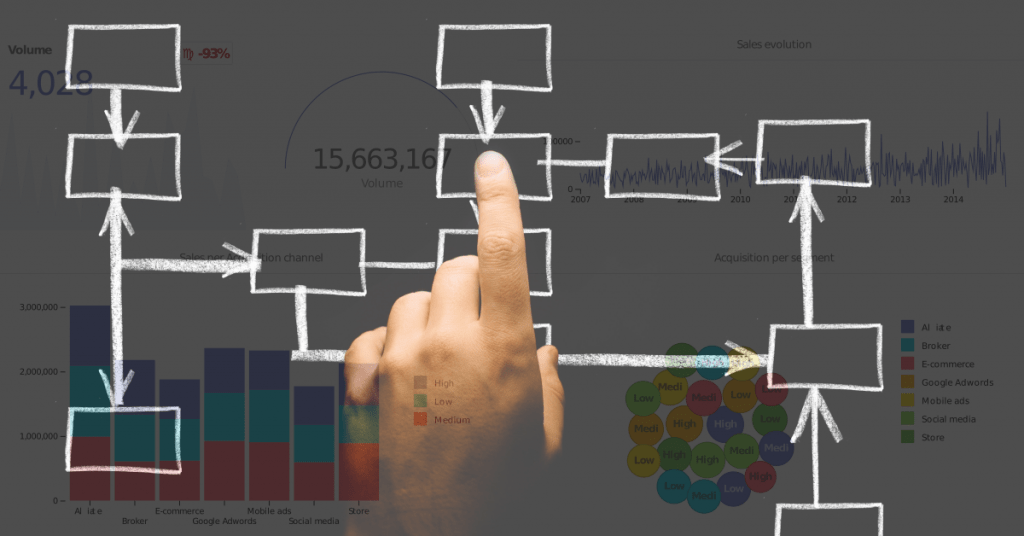Experience the power of Luzmo. Talk to our product experts for a guided demo or get your hands dirty with a free 10-day trial.

July 22, 2019
Mieke Houbrechts
Government institutions use business intelligence to drive policy-making and public information. Learn how embedded analytics makes this process easy.
When it comes to data, the public sector is a real playground. That’s no surprise, given the vast amount of data that government institutions have at their disposal. It’s an immense source of information for health, public safety, climate, transport, and other civil topics.
But in order to use that data to its full potential, government departments will need an effective strategy to handle this heap of information. In fact, according to Gartner research, government CIOs are planning to invest large parts of their technology budget into data & analytics in 2019.
So how can you, as a government official, successfully adopt a business intelligence strategy? Learn how data visualization can help governmental institutions to inform their citizens better.
As to the private sector, it has been in full digital transformation during the past decade, using new technologies to improve business efficiency. Similarly, government departments are catching up with the adoption of new technologies to improve the way they work.
As a result, more & more niche software is developed to serve the specific needs of the public sector. Generally speaking, these technologies are divided into 2 categories.
Whether you are looking to optimize processes or to optimize public information towards citizens, data plays a key role in both cases. Let’s have a look at a couple of examples.

Let’s first talk about open data. Almost all government data is open data. This means that citizens can freely access & use that information. Oftentimes, it contains helpful insights for a citizen’s everyday life, for example information about:
However, most of this open data is shared with the public in a raw or tabular form. This makes it very little insightful for a large group of people who don’t have knowledge of data science.
This is where data visualization & dashboarding can help. In fact, government institutions investing in data visualization are telling their story visually. As a result, they are able to engage with citizens at a much broader scale, opening up the social conversation.
Modern BI tools even offer the possibility to embed these dashboards into a web app or web page. To illustrate, a nice example of this is the Belgian Bureau of Statistics. They created a municipality tool, where citizens can easily view all kinds of statistics about their city or municipality.
“The past couple of years, local policy makers such as mayors and councilors have shown more and more interest in these kind of statistics on their municipality. This is why we decided to create a visual, user-friendly tool that anyone can easily consult.”
Wendy Schelfaut, Spokeswoman at Statbel

Data does not only drive conversation with citizens. It also fuels the internal processes, which can be fairly complex in government institutions.
If you visualize these internal operations data, it will allow you to break down your processes in more detail. Consequently, it helps to expose potential bottlenecks in your processes.
As a result, you’ll be much more in control of your processes. You’ll see in one glance when & where to take action.
To illustrate, the Fire Department of Antwerp is a good example. They visualize all their interventions in interactive data dashboards, to follow up live on each intervention and to get a better view on how they are being handled.
Their dashboards are a big help, especially for interventions at a bigger scale with considerable damage, for example when there has been a storm.

It’s clear that data is a useful asset for government institutions, but it goes much further than that. The entire public sector & even privately held companies that serve the government can benefit from business intelligence.
On government level, business intelligence will drive better operations, policy-making & public information for:
In the wider context of ‘public sector’:
There’s a visible trend towards data literacy, across the entire public sector. Companies & institutions in the public sector are stretching budget for dashboarding & analytics with 1 key reason: to inform & serve their citizens better.
Are you active in the public sector? Talk to our product experts to learn more about public-facing analytics.
Experience the power of Luzmo. Talk to our product experts for a guided demo or get your hands dirty with a free 10-day trial.
